Introduction
Technical debt is an unavoidable reality in software development that can significantly impact efficiency and productivity. This article delves into the nature of technical debt, exploring its causes, types, and the far-reaching consequences it can have on development teams and organizations. By understanding the various forms of technical debt, such as design, code, documentation, and infrastructure debt, teams can better identify and manage these issues.
Furthermore, the article highlights the importance of strategically addressing technical debt through regular assessment, prioritization, and the implementation of best practices like code reviews, refactoring, and automated testing. Ultimately, managing technical debt effectively ensures that software systems remain scalable, maintainable, and capable of meeting evolving market demands.
Definition of Technical Debt
Technical obligation is the hidden cost of opting for a quick and easy solution instead of a more effective but time-consuming one. This concept is similar to financial obligations, where the immediate advantage of a shortcut can result in higher future expenses due to required repairs or restructuring. For instance, a team might delay detailed analysis or risk management to expedite a product's launch, planning to address the issues later. However, shifting priorities often lead to these problems being deferred indefinitely, as long as no critical incidents arise.
The consequences of engineering liabilities are considerable, influencing an organization's financial performance at multiple tiers. A McKinsey survey emphasizes that companies dedicate 10-20% of new project budgets to handle technology liabilities. This obligation often arises from shortcuts taken to meet deadlines or from the negligence and inexperience of developers and stakeholders. Engineering managers sometimes approve quick fixes because they appear less demanding in the short term, both financially and technically.
Furthermore, engineering obligations can hinder progress speed and increase software upkeep expenses. It can manifest as outages and vulnerabilities if not addressed proactively. As technology progresses, like the emergence of AI, developers increase their productivity but also create more challenges related to maintenance. Consequently, handling technical obligations necessitates a strategic outlook and ongoing effort throughout the software creation lifecycle.
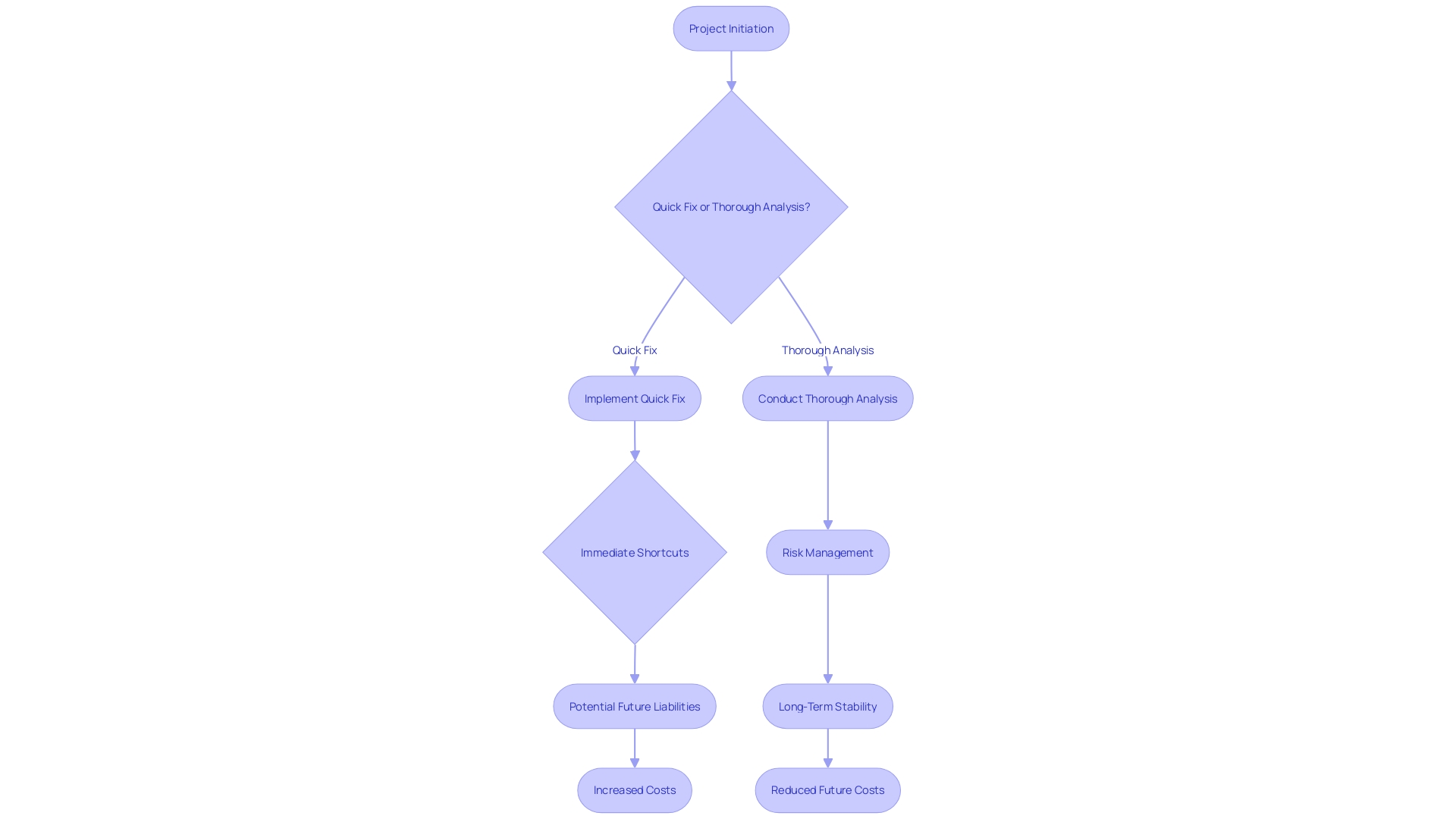
Why Technical Debt Occurs
Technical liabilities arise from various factors, such as tight deadlines, evolving project requirements, lack of resources, and insufficient knowledge about best practices. When development groups make rapid choices to address urgent needs, they frequently gain temporary advantages but build up obligations that necessitate more significant restructuring later. This idea, similar to financial obligations, can provide short-term benefits by assisting new products in reaching the market promptly, but it requires careful oversight to prevent long-term drawbacks. Deliberate engineering liabilities can serve as a strategic instrument, enabling groups to focus on rapidity rather than thorough examination and system robustness. However, as business priorities change, the motivation to tackle this liability can diminish, resulting in rising expenses and decreased progress pace.
The curiosity about software liabilities within the research community was considerably stimulated by a 2010 Future of Software Engineering workshop paper, which highlighted the possibility for enhanced software development efficiency and quality. This document described a joint vision where researchers, tool suppliers, and practitioners cooperate to handle technological liabilities efficiently. Recognizing and evaluating technological obligations is the initial action toward handling it. Carrying out a review of existing obligations assists in recording locations where shortcuts or rapid solutions have been employed, enabling groups to concentrate on the most pressing matters that provide the greatest benefit.
The concept of 'interest' in project liabilities is described as the extra expenses generated by the project because of the existence of such obligations. This can manifest as slowed development velocity or increased future liabilities, such as unsupported third-party libraries. A successful method for prioritizing technical liabilities includes utilizing an effort/impact matrix, assessing tasks based on simplicity and effect to pinpoint quick victories and major initiatives that greatly enhance the codebase.
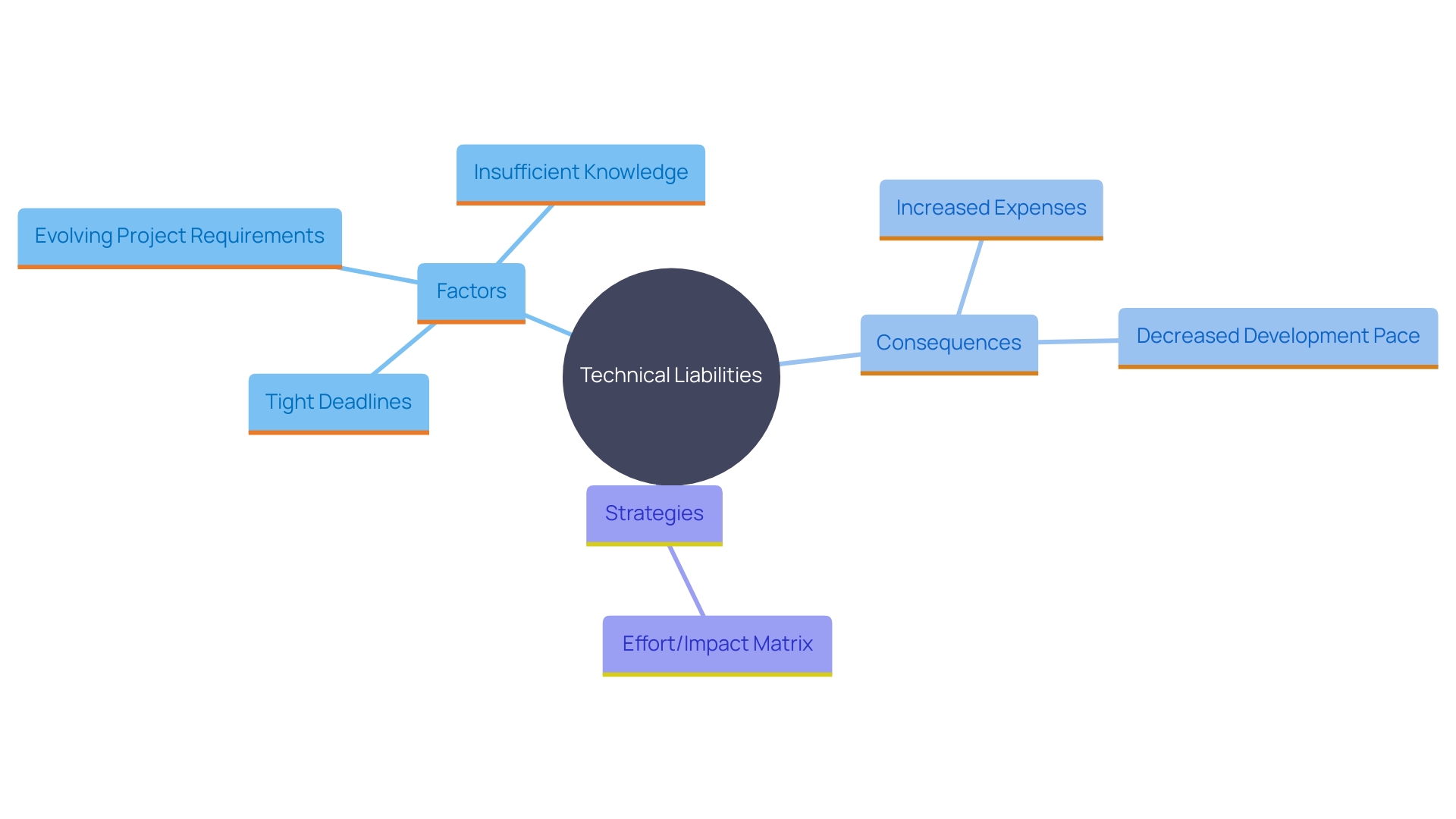
Types of Technical Debt
Technical liabilities encompass various categories, such as design liabilities, code liabilities, documentation liabilities, and infrastructure liabilities. Each category pertains to distinct areas of the software development lifecycle where compromises have been made, potentially affecting the software's quality and maintainability.
- Design Debt: This occurs when software architecture and design decisions are made hastily, leading to a structure that is difficult to extend or modify. Over time, this can result in a fragile system that is prone to errors and difficult to scale.
- Code Liability: Often resulting from hurried coding practices or lack of adherence to coding standards, code liability introduces complexity and inefficiencies in the codebase. This can lead to increased maintenance costs and reduced agility, as fixing bugs or adding new features becomes more time-consuming. '* Documentation Debt: Inadequate or outdated documentation can hinder a group's ability to understand and work with the codebase.'. This kind of financial obligation can slow down onboarding for new team members and make it challenging to implement changes or troubleshoot issues.
- Infrastructure Debt: This involves outdated or suboptimal infrastructure decisions, such as using legacy systems or not keeping up with necessary hardware or software upgrades. Infrastructure financing can lead to increased operational costs and reduced system performance and reliability.
A significant case analysis emphasizes the necessity of tackling technology-related obligations in a proactive manner. At the 2010 Future of Software Engineering workshop, a paper highlighted that tackling engineering liabilities could greatly improve software development efficiency and quality. Moreover, a 2016 initiative by researchers and industry experts at Dagstuhl resulted in a formal definition of engineering liabilities, highlighting its essential role in software development.
Industry specialists such as Nedelcho Nikolov support providing developers with additional time and organizing refactoring sprints to address technological challenges. This method can avoid the buildup of financial obligations, which frequently occurs due to stringent timelines or the lack of coding guidelines in new groups. As Nikolov notes, while rushing to meet deadlines, developers might compromise on unit tests or produce poorly written code that works but is hard to maintain.
By comprehending and handling technology liabilities, groups can sustain superior software quality and performance. Monitoring tools can assist in tracking liabilities in the codebase, enabling teams to prioritize and tackle the most critical issues. This proactive management ensures that systems remain efficient, scalable, and sustainable in the long term.
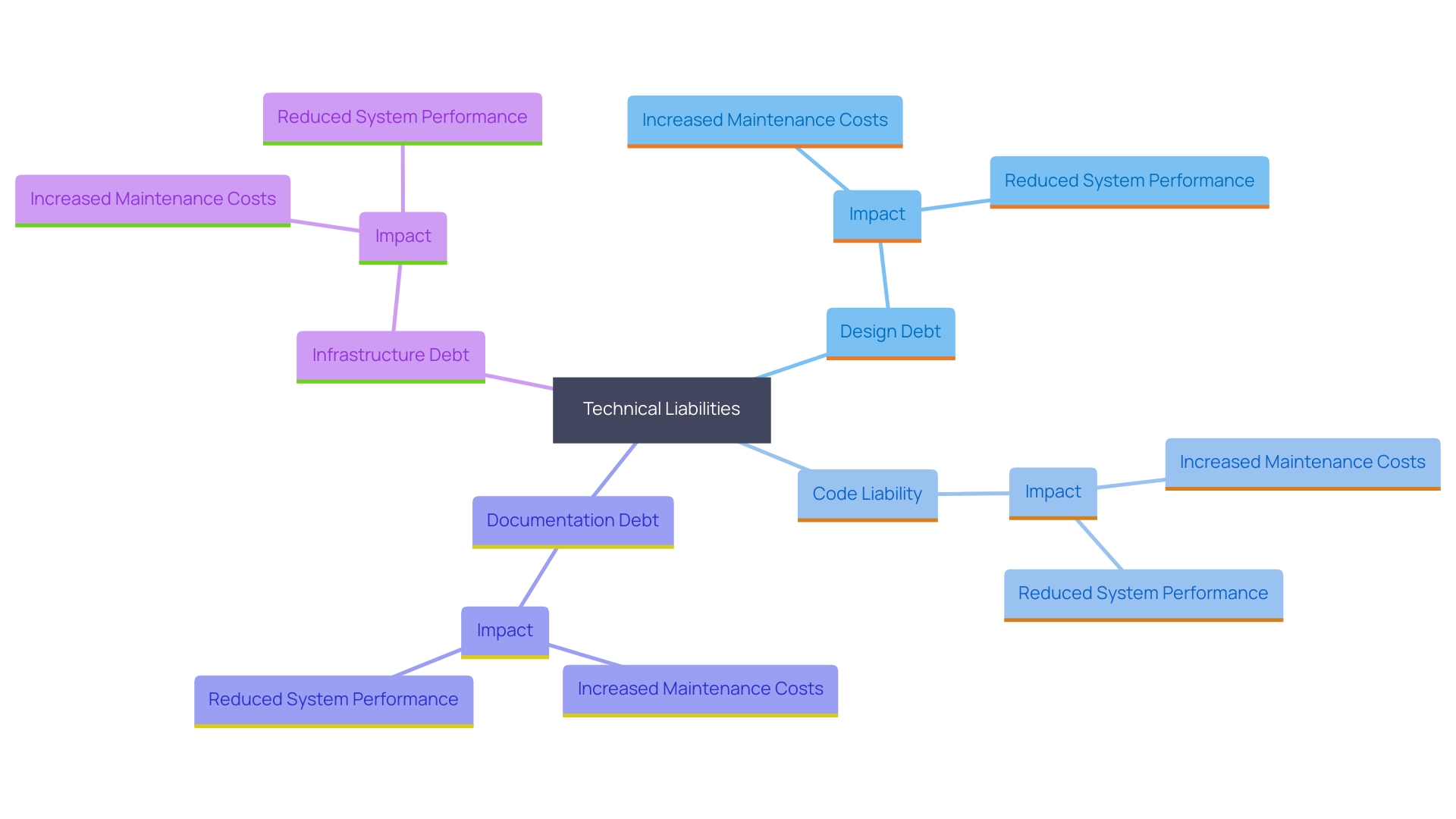
Consequences of Technical Debt
The buildup of programming liabilities can lead to serious consequences, such as reduced progress pace, higher bug occurrences, and challenges in managing and expanding the codebase. As development liabilities increase, the expense of making modifications rises, which can suppress creativity and obstruct adaptability to market needs. 'Based on research by Morning Consult/Unqork, increased expenses for software creation and oversight are major factors leading to technology liabilities, making it difficult for companies to stay competitive. The research community has emphasized that efficiently handling software liabilities can enhance development productivity and quality, enabling developers to better understand their responsibilities. Furthermore, a study by Turing showed that utilizing generative AI tools can enhance developer productivity by 25%, highlighting the significance of creative solutions in handling technological challenges. Ultimately, the concealed expenses of technology liabilities, such as heightened maintenance efforts and diminished agility, highlight the necessity for strategic oversight to guarantee systems stay efficient, scalable, secure, and compliant.
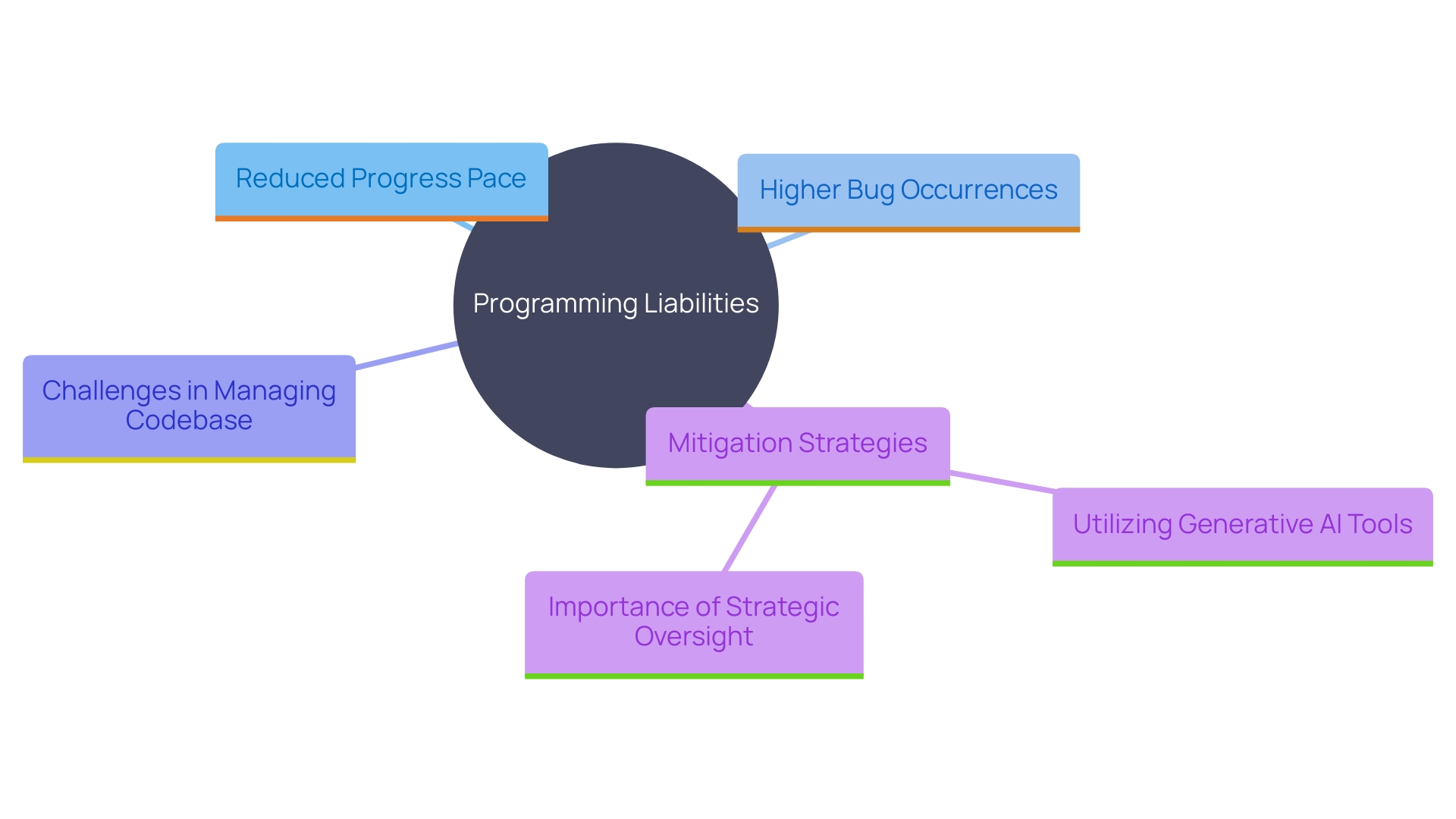
Managing Technical Debt
Efficient oversight of technological liabilities involves several strategic actions. Regular evaluation and prioritization of financial obligations are crucial to prevent them from becoming insurmountable obstacles. Incorporating loan repayment into the development process guarantees that code quality is upheld and that issues do not build up to the extent that they obstruct advancement. Creating a culture that values high-quality code is essential for long-term success.
To tackle technological liabilities, groups ought to create precise standards to evaluate them. This includes utilizing tools to monitor codebase liabilities, which offers insights into the most vital problems. As engineering liabilities accumulate, it can result in higher upkeep expenses, rendering straightforward modifications more time-consuming and error corrections more complicated. Significant system liabilities also diminish flexibility, making it more challenging to react to market shifts, introduce new functionalities, or adjust according to user input. Moreover, systems weighed down by technological obligations are more susceptible to errors, failures, and performance problems, resulting in a below-average user experience and possible loss of clients.
A proactive method for handling technological liabilities includes recognizing their concealed expenses and prioritizing quality over pace. By doing so, groups can build systems that are not only efficient in the short term but also sustainable and scalable in the long run. The choices made today will influence the achievement of upcoming projects, making it essential to handle inherited issues efficiently and cultivate an environment that emphasizes code quality.
Best Practices for Addressing Technical Debt
To efficiently tackle software liabilities, groups should apply a mix of optimal methods, such as code evaluations, restructuring periods, thorough documentation, and automated testing. Code reviews help identify and rectify issues early, while refactoring sessions aim to streamline and optimize existing code. Comprehensive documentation ensures that all team members understand the code structure and logic, facilitating easier maintenance and future updates. Automated testing provides continuous validation of code quality, reducing the risk of introducing new bugs.
Taking initiative in addressing code liabilities is essential for the ongoing well-being of the codebase. As coding liabilities increase, so does the time and effort needed to uphold the code repository, resulting in higher upkeep expenses and diminished agility in creating new features. Systems weighed down by development liabilities are more susceptible to errors, failures, and performance problems, adversely affecting user experience and possibly leading to customer loss. Moreover, a significant amount of technological obligation can dishearten development groups, leading to irritation, exhaustion, and increased attrition rates.
Observing and assessing technology liabilities with suitable instruments can offer understanding of the most important problems, enabling groups to focus their efforts. For instance, Professor Raffi Khatchadourian, who obtained a $600,000 grant from the National Science Foundation to examine engineering liabilities, highlights the significance of refactoring to enhance the long-term reliability of systems. Refactoring involves restructuring code to maintain its original semantics while reducing duplication and improving overall organization. This approach not only enhances code maintainability but also ensures that bug fixes are propagated throughout the system efficiently.
In today's fast-paced software development environment, it is tempting to prioritize speed over quality. However, the concealed expenses of technology obligations can far surpass the immediate advantages. By adopting best practices and proactively managing technical debt, teams can build systems that are not only efficient in the short term but also sustainable and scalable in the long run. Remember, the decisions made today will shape the success of future projects.
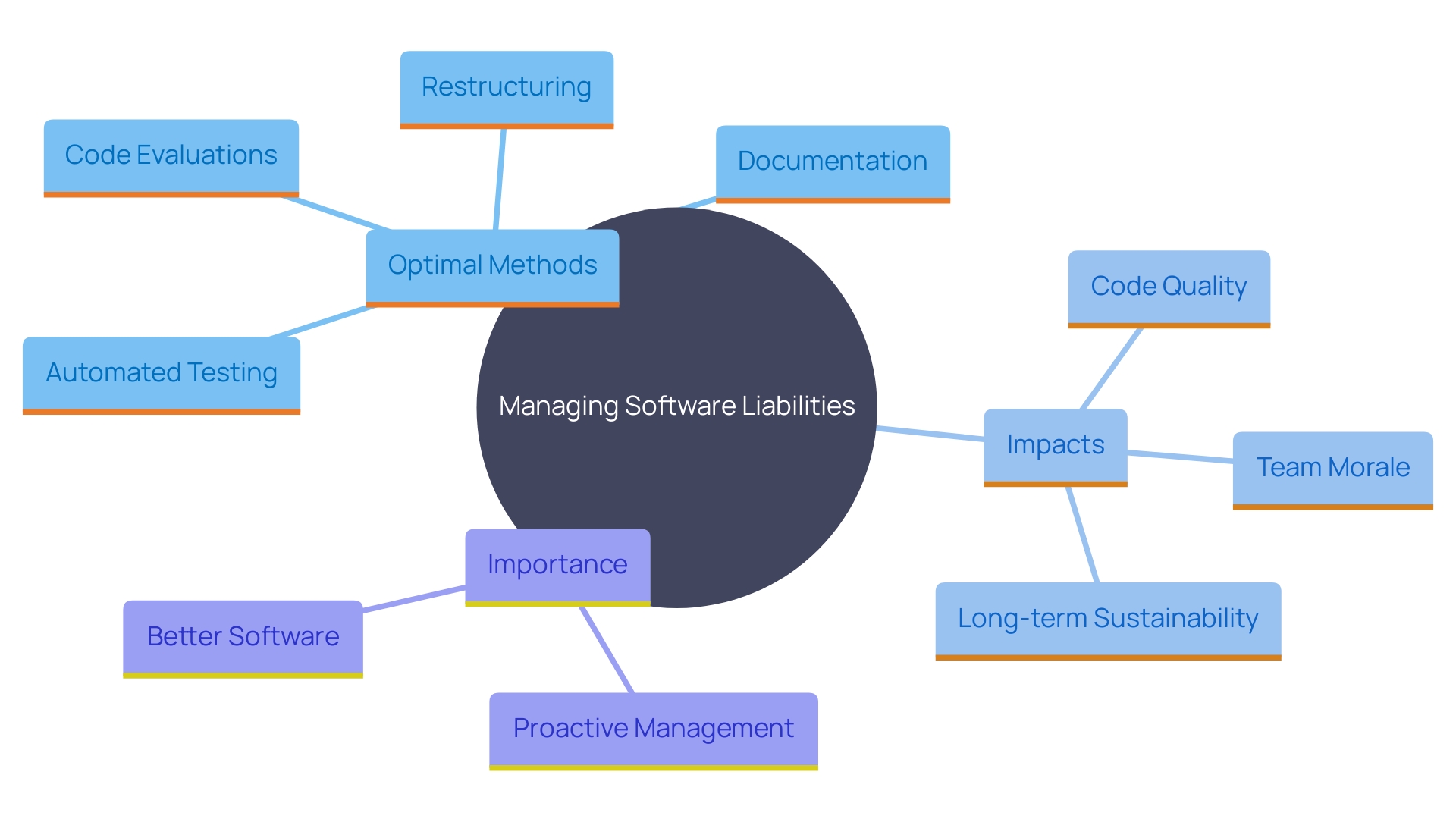
Conclusion
The complexities of technical debt underscore its profound impact on software development, affecting everything from code quality to project timelines. By recognizing that technical debt is akin to financial debt, organizations can appreciate the importance of addressing it proactively rather than allowing it to accumulate. The costs associated with neglecting technical debt can escalate, hindering innovation and responsiveness, which can ultimately compromise a company's competitive edge.
Understanding the different types of technical debt—design, code, documentation, and infrastructure—allows teams to pinpoint specific areas that require attention. Each category presents unique challenges that, if left unmanaged, can lead to increased maintenance costs and diminished agility. This highlights the necessity for a strategic approach to technical debt management that incorporates regular assessments, prioritization, and the adoption of best practices.
Implementing effective strategies such as code reviews, refactoring, and automated testing can significantly mitigate the risks associated with technical debt. These practices not only enhance code quality but also foster a culture of continuous improvement within development teams. By taking an active stance on managing technical debt, organizations can ensure their software systems remain scalable, maintainable, and ready to adapt to future market demands, ultimately leading to improved productivity and long-term success.
Frequently Asked Questions
What are technical obligations?
Technical obligations refer to the hidden costs associated with opting for quick and easy solutions instead of more effective, time-consuming ones. These obligations can lead to future expenses due to necessary repairs or restructuring.
How do technical obligations relate to financial obligations?
Similar to financial obligations, technical obligations offer immediate advantages but can result in higher future costs. For instance, if a team rushes a product launch without thorough analysis, they may face more significant issues later.
What are some common causes of technical liabilities?
Technical liabilities can arise from various factors, including tight deadlines, evolving project requirements, lack of resources, and insufficient knowledge about best practices.
What are the consequences of accumulating technical liabilities?
Accumulating technical liabilities can lead to reduced development speed, increased bugs, higher maintenance costs, and difficulties in managing and expanding the codebase.
What types of technical liabilities exist?
Technical liabilities can include: Design Debt (hasty architecture decisions), Code Liability (inefficient coding practices), Documentation Debt (inadequate documentation), and Infrastructure Debt (outdated infrastructure choices).
How significant are the costs associated with technical liabilities?
Research indicates that companies allocate 10-20% of new project budgets to address technology liabilities. Increased expenses in software creation and oversight can inhibit competitiveness.
What strategies can organizations use to manage technical liabilities?
Organizations can adopt several strategies, including regular evaluation and prioritization of technical obligations, creating standards to assess and monitor liabilities, and implementing code reviews, restructuring periods, thorough documentation, and automated testing.
How can teams prioritize which technical liabilities to address first?
Using an effort/impact matrix can help teams assess and prioritize tasks based on their simplicity and potential impact, allowing them to identify quick wins and major initiatives.
What role does culture play in managing technical obligations?
Creating a culture that values high-quality code is essential for long-term success. It encourages teams to focus on quality over speed, making it easier to manage technical obligations effectively.
How can organizations ensure ongoing software quality?
Monitoring tools can help track liabilities within the codebase, enabling teams to focus on the most pressing issues. Proactive management is crucial for maintaining efficiency, scalability, and sustainability in software development.
What is the importance of refactoring in managing technical liabilities?
Refactoring helps enhance the long-term reliability of systems by restructuring code without changing its original functionality, thereby improving maintainability and reducing duplication.
Why is it important to address technical liabilities proactively?
Proactively addressing technical liabilities prevents them from escalating to insurmountable obstacles that can obstruct progress and lead to increased costs, ultimately affecting software quality and user experience.




